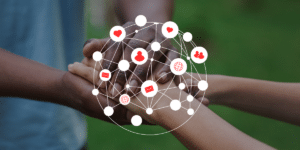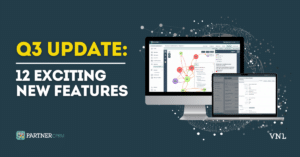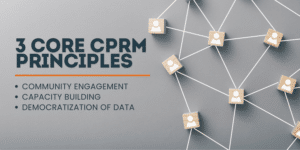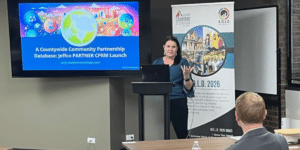How to Build Partnerships with Community Organizations

Community partnerships are a powerful force for good when it comes to social change and impact. Building new connections with community organizations provides new ideas, resources and ways of thinking that can help you make the world a better place, whether you’re working to improve education, healthcare, the environment, or something else. If you want to know how to build partnerships with community organizations, it’s important to start from the right place, with the right frame of mind. That means starting with an overall strategy for your network of community partners. Once you have that strategy in place, you can begin doing the leg work of partnership development. Here’s how it works.
Before You Build Partnerships, You Need To Build a Strategy.
If you plan to build community partnerships to advance your work, you need to make a plan about how you will manage and work with your network of partners. Often times, organizations begin outreach with a single goal in mind: More is Better. They try to develop more partnerships, hold more meetings and zoom calls, and become more integrated with community organizations. However, this strategy just isn’t sustainable – it quickly saps time and resources without producing much in terms of outcomes. The key is to build the least number of connections, and maintain with the least amount of work necessary to reach shared goals. Shifting your mindset to think in this way will help you build more effective, strategic community partnerships.
How to Build Partnerships with Community Organizations: Key Factors to Consider
Every network of partners has a unique history, context and goals – but many of the same categories to consider when building partnerships. Thinking through each of these questions in relation to your community partnership work will help you devise a strategy that fits your specific needs. That will in turn help you better understand how to build partnerships with community organizations.
What are your goals and their goals?
Goals are the glue that hold collaboratives together, providing a shared sense of vision across organizational boundaries to drive collaborative action and resource-sharing. Goals should be co-created whenever possible; coming to a community organization with pre-defined goals makes it unlikely they’ll feel ownership of the process, driving down engagement. You should have a general idea of what your partnerships will accomplish, with flexibility to accomodate partner ideas.
What kind of value are you looking for?
There are many different forms of value when it comes to collaboration. Some partners provide more traditional forms of value, like funding or staff support. Others provide information, including lived experiences and data. Sometimes, a partner’s value comes from their leadership ability, facilitation skills, power or influence with decision-makers. Consider all the various types of value that align with your goals, and look for partners best-suited to provide it.
Where are there existing trusted relationships?
Every organization has existing partnerships and relationships with community organizations. Depending on your history, some of these contacts are likely more trusted than others: They’re open to communication and easy to reach, share your mission strongly and are reliable and easy to count on. These are natural places to start, leveraging your ties with these strong partners to identify those in their network that may be suited to work with too. Be sure you look beyond your existing network too though, or you risk missing out on diversity that makes a network strong.
What role will this partner play in your network?
Every partnership should serve a specific purpose in your network – a relationship that exists for its own sake takes up precious time and resources to maintain. Considering the value you’re looking for from your community partners, try to assign each partner a role to play, and only make them responsible for attending meetings relevant to that role. This helps ensure you aren’t asking too much of your partners. Some examples of partner roles include:
- Providing expert knowledge, lived experience, data, or other information.
- Supporting your work with funding, staff or volunteer time, or other in-kind donations.
- Serving as an influential leader who can attract additional attention & support for your cause.
- Helping facilitate group discussions, calls and meetings.
How can you diversify your partnerships?
We tend to build partnerships with the individuals and organizations we already know the best. As a result, even when networks are built with diversity in mind, they often end up silo’d from other fields and ways of thinking. Try to consider unlikely partners you wouldn’t ordinarily work with, along with other stakeholders that impact or are affected by the issue being dealt with but haven’t been involved in the past. A diverse network provides more diverse forms of value, key to your shared success as a network of community organizations.
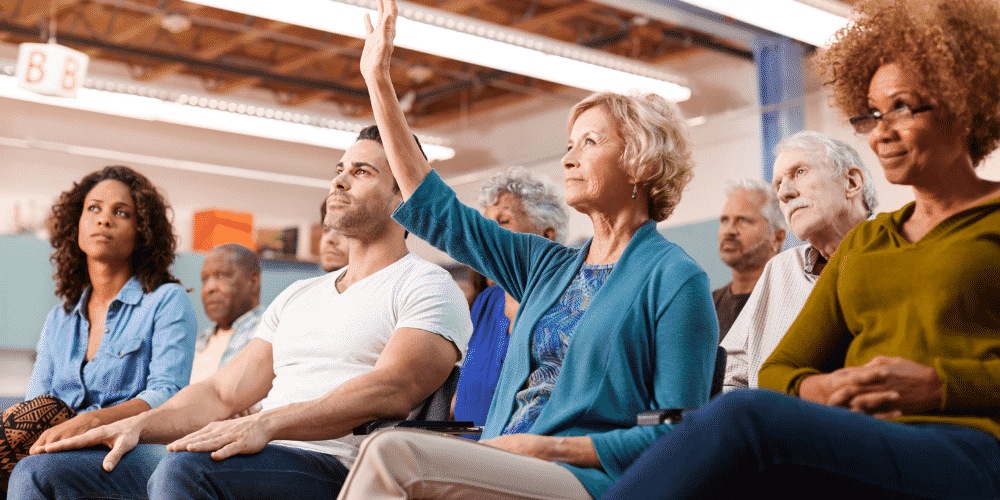
Identify the Community Organizations That Fit Your Strategy and Plans
Once you have thought through the above areas, you should have a better idea of how to build partnerships with community organizations, starting with your network strategy. With those factors in mind, you can turn to considering which organizations are best positioned for a community partnership in terms of their goals and mission, resources and capacity. For example, a small nonprofit may have experience with your program focus, but lack the required time and staff to participate. Community Gatekeepers can help in your search for community organizations.
Look for Community Gatekeepers and Other Key Stakeholders
Community Gatekeepers are influential and well connected leaders in the community you seek to connect with. They are usually well trusted by other leaders, and can help connect you with other community organizations to build partnerships with. Reach out first to those you have a connection with to identify any gatekeepers or other stakeholders before you try researching online to identify groups you have no connections with. Here are a few other categories to consider as you learn how to build partnerships with community organizations.
Local & Regional Nonprofits
A good place to start are the nonprofits in your local and regional area. This includes both topical groups working in your same area of focus, along with organizations with a broad focus like the United Way and YMCA. Often these groups have contacts with more potential partners and can help broker connections as well.
City, County & State Government Agencies
Local, county and state government agencies are all embedded in networks of community organizations and partners. They are often overtaxed, and you may have a better chance connecting with them successfully through a mutual contact, like a local nonprofit mentioned above.
Educational & Research Institutions
Local universities, community colleges and research institutions maintain practice-oriented partnerships with the community. Look for an Office of Community Engagement or partnership to connect with and get started.
Healthcare Providers & Institutions
Similar to universities, healthcare providers like hospitals and clinics take part in many partnerships with the community, especially as a part of new Community-Health assessments established by the Affordable Care Act.

Tips for Reaching Out to Community Organizations to Build Partnerships
When it coms time to make your outreach, keep a few tips in mind. First, approach with an open-mind about what the partnership can accomplish. Starting the conversation as if you know exactly what the partnership will accomplish, or focusing on your own goals can turn people off from working with you. Focus on what the collaboration can accomplish for you both, ask questions, and engage in active listening.
Second, try to find a specific role for partners to play. Vague, open-ended requests for collaboration often lead to a lack of sustained engagement. Do your homework and ask questions to find the unique types of value this partner provides, and work with them to find a role where they can provide this value and benefit themselves.
Network Data Can Teach You How to Build Partnerships with Community Organizations.
Partnership-building feels intuitive so us, just as natural as building friendships or relationships. However, as you can see, there is a real science and art to it as well. For the most robust community partnership programs, data and evidence about your collaboration is essential for building effective, efficient networks of partners. We’ve been building network science tools to do just that for more than a decade, providing networks and partners an evidence-based way to learn how to build partnerships with community organizations. Click here to learn more about our community partner relationship management system, PARTNER.
More Resources: How To Build Partnerships with Community Organizations
Still looking for more resources to help with your partnership-building efforts? Here are a few additional tools and resources to help you get started:
Get Started Building your own partnerships today!
Hopefully you now understand how to build partnerships with community organizations. Starting with a strategy instead of rushing to build as many partnerships can help you build a stronger overall network that helps you reach your goals effectively. Looking for even more help with your partnership-building efforts? Contact our team to learn about our consulting options and see if we can help you with a custom network science solution.

About the Author: Alex Derr, M.P.A.
Director of Marketing & Communications
Alex joined VNL in 2017, originally supporting our events. He now helps manages our communications and marketing strategy and content development work. Alex creates blogs, infographics, reports, and other content while managing our web and social media presence. He also runs our email marketing campaigns, tracks analytics, and conducts market research to drive our strategy. He supports our entire team with copywriting, graphic design and research, and helps with events, webinars, demos, and other online learning. When he isn’t at work Alex spends his time climbing 14ers (30 done, 28 to go!) and blogging on his own website, The Next Summit Blog.
